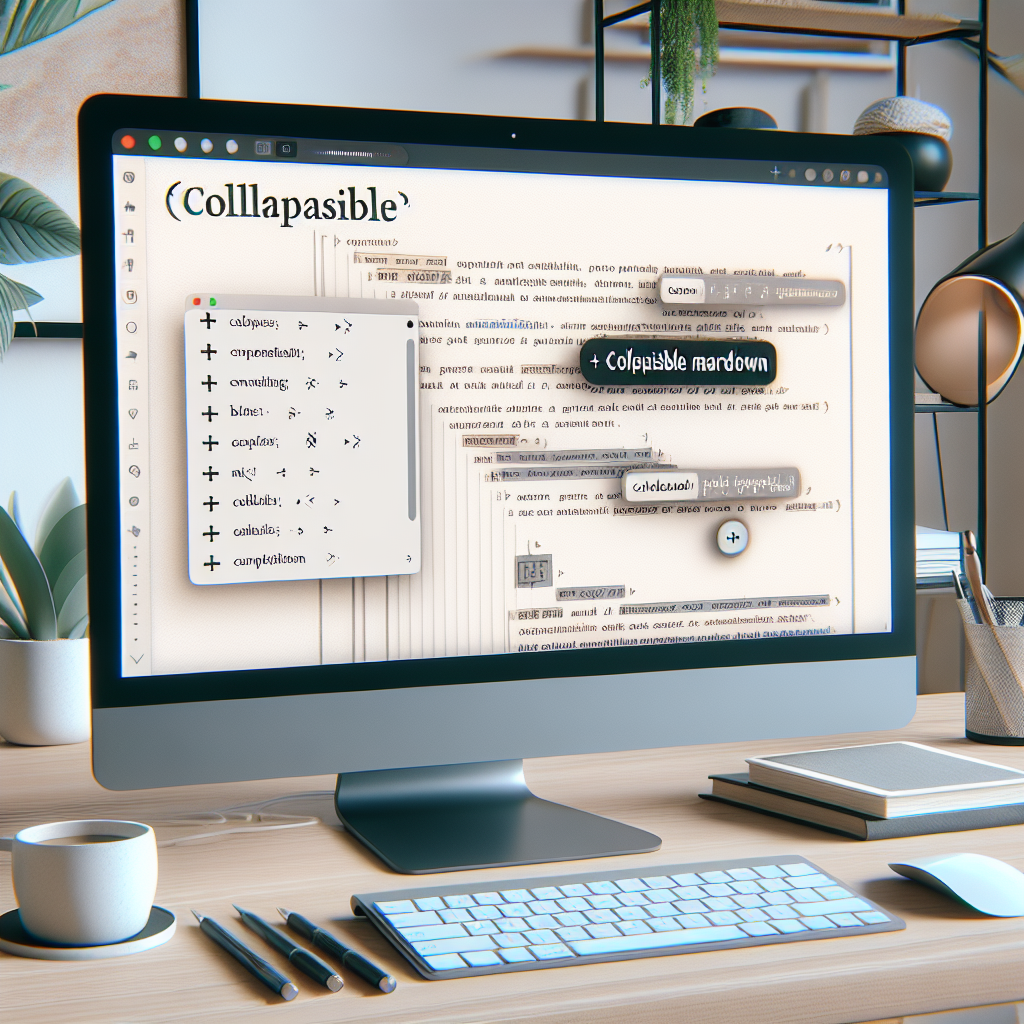Collapsible Markdown: Enhancing Document Readability
Collapsible Markdown enhances document readability. By using HTML’s <details> and <summary> tags, you can create collapsible sections in Markdown to hide and reveal content. Advanced features can be implemented with CSS and JavaScript.

"Don't waste another minute formatting Markdown by hand. Try our free tools now and see the difference!"
Markdown is a lightweight markup language that allows users to write in an easy-to-read, easy-to-write plain text format, which then can be converted to structurally valid HTML. While Markdown itself doesn't provide built-in support for collapsible sections, this feature can be implemented through a combination of Markdown, HTML, and sometimes JavaScript. Here's how you can create collapsible sections in Markdown documents.
Using HTML for Collapsible Sections
The most common method to add collapsible sections in Markdown is to use HTML details and summary tags. These tags are supported by most modern web browsers and many Markdown processors. Here’s a simple example:
<details>
<summary>Click to expand!</summary>
This part of the text is hidden until the user clicks the summary above.
</details>
When rendered, this code creates a clickable summary that reveals its content when clicked. This is particularly useful for long documents where you want to hide supplementary information or provide intuitive navigation.
Combining with Markdown Content
You can seamlessly integrate Markdown content within these HTML tags. For example:
<details>
<summary>Module 1: Introduction</summary>
### Key Concepts
- Markdown Basics
- Using HTML in Markdown
#### Learning Objectives
By the end of this module, you will:
1. Understand Markdown syntax
2. Be able to create simple HTML within Markdown
</details>
This approach allows you to maintain your formatting without losing the benefits of Markdown, such as headings, lists, and more.
Advanced Customization with CSS and JavaScript
For more complex collapsible sections, such as those needing animations or specific styling, you can use additional CSS and JavaScript. This approach is more advanced and may not be supported in all Markdown renderers.
Example with Custom CSS
<style>
.details-section {
padding: 1em;
background-color: #f9f9f9;
border: 1px solid #ddd;
margin: 1em 0;
}
.details-section summary {
cursor: pointer;
font-weight: bold;
padding: 0.5em;
background-color: #eee;
}
</style>
<details class="details-section">
<summary>Advanced Content</summary>
Here we have some advanced, collapsible content styled with CSS.
</details>
Example with JavaScript
Here is an example to automatically close other open sections when a new one is opened:
<script>
document.addEventListener('DOMContentLoaded', function () {
var sections = document.querySelectorAll('details');
sections.forEach(function (section) {
section.addEventListener('click', function () {
sections.forEach(function (sec) {
if (sec !== section) sec.removeAttribute('open');
});
});
});
});
</script>
<details>
<summary>Section 1</summary>
Content for section 1.
</details>
<details>
<summary>Section 2</summary>
Content for section 2.
</details>
This script ensures that only one section is open at a time, providing a cleaner and more user-friendly experience.
Platform-Specific Solutions
Some platforms that support Markdown natively, such as GitHub or Reddit, may have their own features or limitations when it comes to using HTML tags within Markdown. Always consult the specific platform’s documentation if you're unsure about compatibility.
Conclusion
Collapsible sections in Markdown can enhance readability by hiding less relevant information until needed, maintaining a cleaner and more navigable document. By utilizing HTML details and summary tags or combining them with CSS and JavaScript for advanced functionality, you can create a dynamic and user-friendly Markdown document.
This article should give a clear and comprehensive guide on implementing collapsible sections in Markdown.



Comments ()